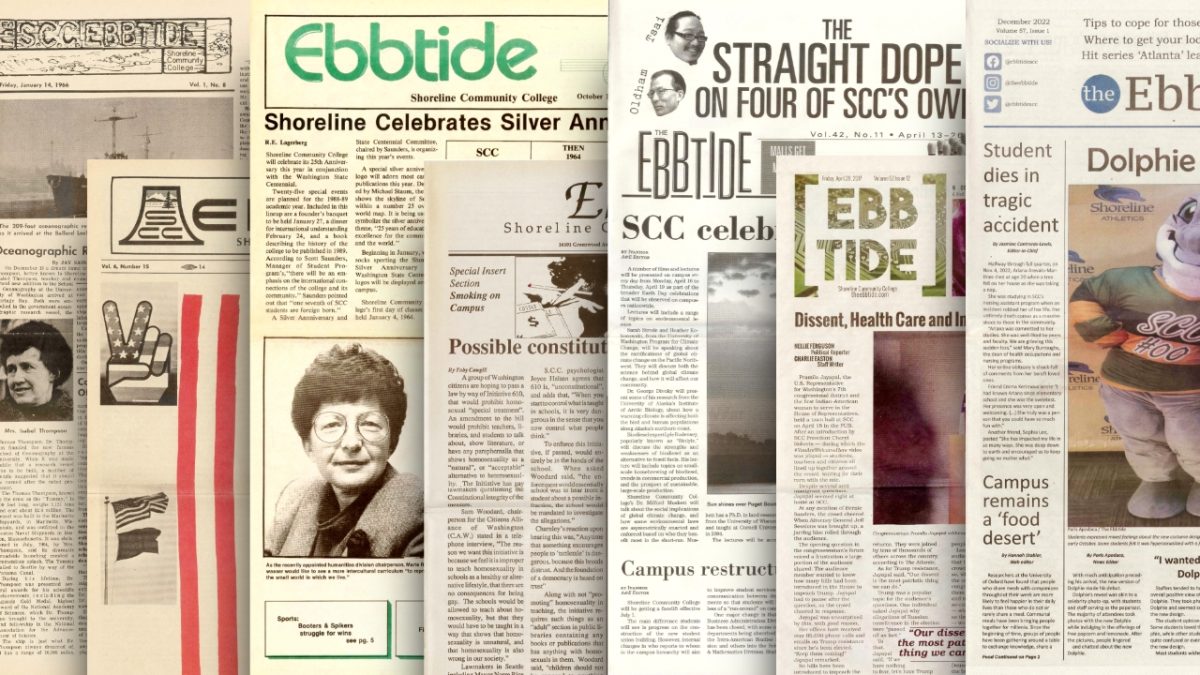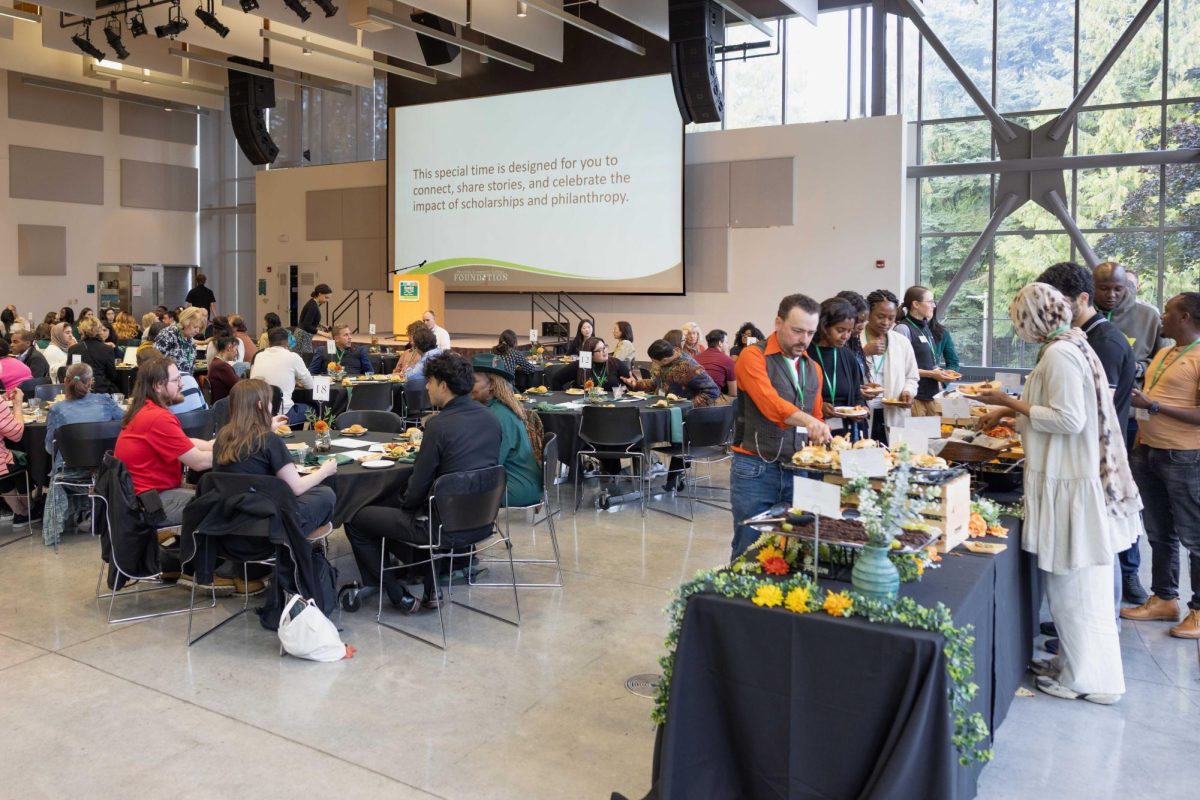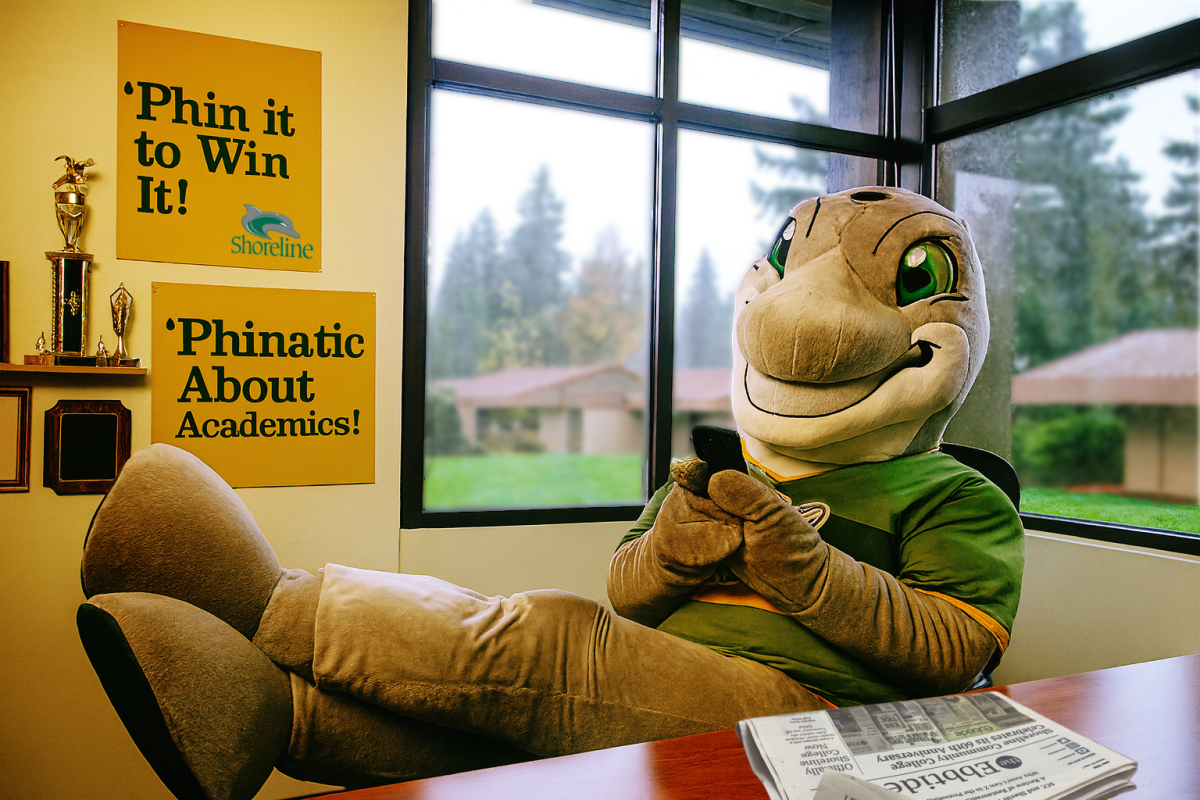“We will not stand for bigotry.”
Darnesha Weary of the Dale Turner YMCA said those words Friday, Oct. 7. Recently, Weary and her 14-year-old daughter were at their neighborhood’s local grocery store in Shoreline, where Weary’s daughter was harassed and called names for wearing her “Black Lives Matter” T-shirt. The two had just come from a cultural event at Shorewood High School and the incident at the store left Weary questioning her and her family’s safety for the first time.
On Friday, Oct. 7, students were encouraged to experience the beauty of different cultures during Shoreline’s Multicultural Night in the college theater.
For Weary and her daughter, the event was an outlet for their frustration, as well as a way to bring awareness to discrimination in the community.
Philip Attipoe,the master of ceremonies and a founding member of the Just Humanitarian Project for Cultural and Diversity Legacy (JHP), which was created in 2013 by African performing artists, introduced Mayor Chris Roberts of Shoreline, who attended the event to support the performers’ message against continued discrimination
“I see diversity as a strength,” Roberts said, as he spoke shortly about his goals for implementing language- based resources to help the growing multicultural community.
JHP was the first act to take the stage. Their primary objective is to share traditional African music, dance and art with their community. JHP President Eben Pobee, Master Drummer Charles Armah, Lead Choreographer Eric Attoley, and drummer Yaw Amponash opened with a “drum recitation” on Atumpan drums, a medium that implements “drum language.”
The next act was a Northern traditional dance called Bamyaa that consists of different names, musical phrases and moves. Originating in the Zheng village of Nanton, the dance’s name came from the filling Tuubani beans, which are similar to chickpeas. Oge, the third contemporary social dance, goes at a four-by-four mid-tempo controlled by the speed of a bell.
Next up was the Baile Folklore Colibri group, a traditional Mexican dance team based in Everett. Young girls wore folklorico Jalisco dresses, which had bright earth-toned skirts ranging from dusty browns and desert oranges to blood red with cream-white blouses. The young boys wore simple matching white and red bandas, or sashes, and Jalisco Trujae Sutachs, simple three-piece dance suits.
 The Baile Folklore Colibri dancers perform.
The Baile Folklore Colibri dancers perform.
The organization performed the Jarabe tapatio, or the Mexican Hat Dance., which has been Mexico’s national dance since its first performance in 1790, according to the donQuixote website.
Hula O Lehualani was the next performance to awe the audience. The hula studio is stationed in Edmonds and teaches traditional ‘auana and kahiko dance styles. The Kumu (Hawaiian teacher) Krista Moanike’alanālehua Espiritu, has been sharing the Polynesian art since the 1970s.
The dancers wore their bright yellow leis to the right of their hair (a symbol for their unmarried status), and their ocean-blue dresses shined against the theater’s dim background.
Hula is highly symbolic of nature, family and human connection, with each move being the pull of the tide or the push of the wind. Every step had a reason, a story and a voice.
 Hawiian dancers perform the Hula.
Hawiian dancers perform the Hula.
Although not a performance, the next segment introduced the Sarah Haycox movement, a petition to change the name of the Children’s Learning Center to the Pratt Learning Center. News Channel King 5 dedicated a short, informational program to the movement’s founder and namesake, fourth grader Sarah Haycox, who spoke adamantly and passionately about her goal.
Civil rights leader and executive director of the Seattle Urban League Edwin T. Pratt was shot on his Shoreline doorstep in 1969.
In honor of Pratt, members of the community established Pratt Park and the Pratt Fine Arts Center.
Pratt’s legacy at the Children’s Learning Center was a simple small block jutting out from the grass behind a chained-off field. Haycox’s interest in Pratt’s history motivated her to begin her petition early this year, and soon afterward, she was able to present her 700 signatures to Shoreline’s Parks and Recreation meeting in February.
Currently, Haycox and the community are awaiting the department’s final choice of name between Pratt and two other unknown options. Haycox’s beloved historical figure once said, “The integration is enriched only when people see each other as people or peers.”
Next, the Bosnian Folk Dance group took center stage. Kud Ljiljan is Bosnia and Herzegovina’s traditional folk dance. The performance had 14 total boys and girls evenly. Kud Ljiljan spokeswoman Elvira Vojnikovic said that typically, Bosnian dances could be four to eight minutes long and take one to two months to practice, two hours a week.
Many different cultural backgrounds make up the group, from Iraqi, El Salvadorian Egyptian and Mexican according to Vojnikovic. Each fluid movement on stage and twist of the white handkerchiefs which every young woman on stage carried, symbolizing a woman’s separation from lechery, was taught by coach and choreographer Anela Becic.
Since August, Becic has risen to coach status after being a member since the group’s start in 2014. Every single step had been handcrafted by Becic, a skill passed down from her sister, the previous coach.
The local Shorecrest Highland Dancers showcased northwest Scottish dance. The performance has been a part of Shorecrest since 1963. The Highland sword dance involved two swords crossed in an “X” at the dancer’s feet, while bagpipes sounded off in the background.
Highland dancing honors Scottish spirit, differing from other dances because they are solo and competitive. The Shorecrest Highland Dancers are usually the head of Shorecrest Pipe and Marching Band.
Next on the list was Weary’s North Side Step Team, another Shoreline-based group. Without music, the all-girl African-American team used few words and phrases to demonstrate their emotions and support for Weary’s daughter, Black Lives Matter and themselves.
“Our lives matter,” said the young girls in unison as they stomped, roared and clapped their hands against their bodies in rhythmic fashion.
“We are the setters, we set the stage,” the girls said as they wrapped up.
Youth for Culture Promotion followed the mostly silent act. UW student musician, researcher and founder of Youth for Culture, Subhash Prajapati, and his undergrad, SCC-graduate partner Dylan Mines, performed traditional Nepalese songs.
Prajapati performed methodically on Nepalese drums known as nayakshin, pachhima and magaa khin while Mines played the string instrument piwancha.
“Performing such rare and unique music in the broader audience was a real contentment,” Prajapati said of his and Mines’ performance.
Attipoe’s JHP Organization was the final performance of Shoreline’s Multicultural Event. With only two performances, Attipoe shared the story behind Ghanaian folk dance.
Attipoe told the legend of the northern region of Ghana, where “the river valley is wet”, and ritualistic social dances are performed during the harvest festival. The legend speaks of a curse placed upon evil husbands who treat their wives wrongly. To defeat the curse, Ghanaian priests and leader announced all men must wear their wives’ clothes and dance as a sign of respect.
What had happened to Weary’s family opened her eyes to the reality that not everywhere is completely accepting of different cultures. In severe cases, racial discrimination leads to tragedy. Weary’s changed perspective has given her the chance to share her step- team’s voice, allowing the audience to have a personal insight.
The world has a long way to go, but so long as people are willing to attempt to understand other cultures, there is a path forward.
–Azia Lualhati
-Photo courtesy of Amina Saracevic














